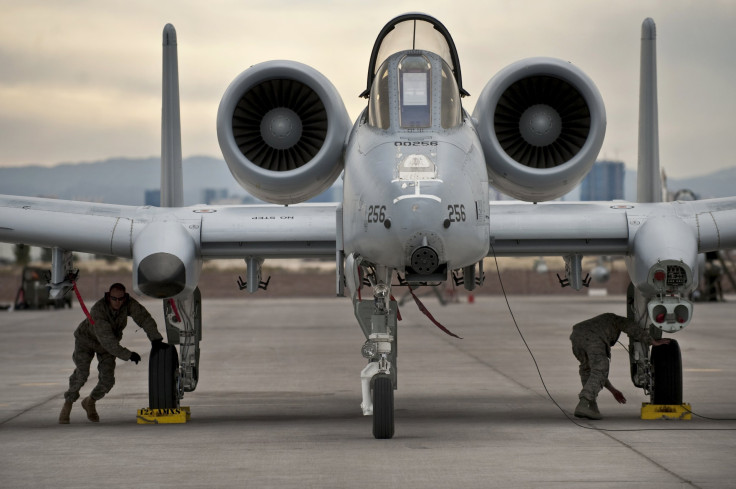Critics Say Chuck Hagel Is Throwing Away $1B, Giving Troops 'Mediocre' Air Support By Retiring A-10

Government watchdogs are criticizing the decision by Defense Secretary Chuck Hagel to retire the entire A-10 aircraft fleet from the Air Force inventory, saying the Pentagon would be wasting more than $1 billion recently spent upgrading the planes and that troops will be left with “mediocre” close air support.
Hagel announced in his budget proposal on Monday that he intends to save $3.5 billion over five years by removing the A-10 fleet from service. They would be replaced in time by the costlier F-35. Highlighting the age of the A-10s (40 years) and “single-purpose” to “kill enemy tanks on a Cold War battlefield,” Hagel said, “It cannot survive or operate effectively where there are more advanced aircraft or air defenses.” Other aircraft like the B-1 bombers and drones can effectively deliver close air support, he said.
However, in an analysis of the secretary’s announcement, defense experts Winslow T. Wheeler and Pierre M. Sprey argue that the A-10 fleet should remain in the United States armed forces’ inventory until an aircraft that is better at troop support is found.
The two argue that there are certain components of close support missions that bombers and high-speed jets can poorly perform or not at all. For example, they said those planes are vulnerable to small-arms fire and aren’t ideal for conditions like mountain valleys or 1,000-foot cloud ceilings. Moreover, there is poor resolution from the video, radar and infrared sensors on high-speed planes at 10,000 feet or more, rendering them somewhat unreliable to distinguish friends from foes and combatants from civilians.
A part of close support, they say, is having pilots with special training who have an “intimate” knowledge of ground tactics and the shifting ground battle and are familiar with the “professional exchange” with ground troops, which is vital to split-second decision-making and the stress of land combat.
“A-10 pilots, focusing only on supporting ground combat, do these things as a matter of routine,” the Wheeler-Sprey analysis read. “Multi-role fighter pilots, let alone long-range bomber pilots, do none of that. The dispersal of this uniquely skilled close air support A-10 pilot cadre will be the biggest loss of all if the air force gets its way on the A-10 controversy."
“It is that which Secretary Hagel seems to understand the least,” they added. “As a combat veteran and non-commissioned officer of the Vietnam War, Chuck Hagel should understand these things. It would seem that he suffers not from the fog of war but from the miasma of being too long at the upper regions of politics and from the sludge being served up to him by Air force leaders too eager to drop their moral obligation to American soldiers and Marines engaged in combat-now or in the future.”
Asked for a response to the analysis, a Pentagon spokesman said that, “The secretary has made his position on the A-10 clear.”
More than 320 A-10s are operating out of five bases across the U.S. The Pentagon recently spent $1.1 billion upgrading the wings on more than 200 A-10s. This upgrade, according to some lawmakers, gives the planes another 15 to 20 years of flying. Air Force data shows the A-10’s ownership cost per flying hour is $19,736 compared to that of the B-1B, which is almost $58,000.
Congressman Ron Barber, D-Ariz., said on Monday he would fight to keep the A-10s, which he deems vital to his state. The plane has a large presence at the Davis-Monthan Air Force Base in Tucson, Ariz., and its economic impact there is said to be about $1.1 billion. Arizona media are reporting that the future of the base is uncertain since training A-10 pilots has been the base’s primary mission since 1976.
Barber said since a billion has been spent upgrading the planes, savings from their retirement would amount to just $700,000.
“The A-10 is the most effective close-air support for our troops on the ground,” Barber said. “The F-35 is a long way off ... it is not an aircraft designed to do what the A-10 does best ... fly slow and low and protect our troops.”
© Copyright IBTimes 2024. All rights reserved.












